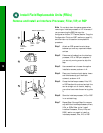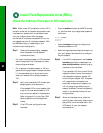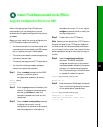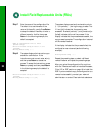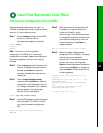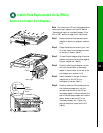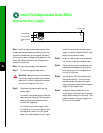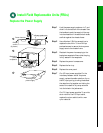
24
Install Field Replaceable Units (FRUs)
The console display indicates whether or not the
operation was successful. A series of exclamation
points (!!!!) and [OK] (as shown in the preceding
example) indicates that the operation was successful.
A series of periods (. . .) and [timed out] or [failed]
indicates a failure due to a network fault or an
incorrect server name, address, or filename. The
following is an example of a failed attempt to boot
from a remote server:
Booting Router-confg ..... [timed out]
If the display indicates that the process was
successful, as shown in Step 6, proceed to the next
step.
If the display indicates that the process failed, verify
the name or IP address of the remote server and the
filename, and repeat the preceding steps. If the
process fails again, contact your network
administrator.
Step 7 Enter the show startup-config command
to confirm that the configuration file was
retrieved correctly. Look at the first line
for the configuration file size. Compare it
with the file you retrieved from the TFTP
server to confirm that it is correct.
Following is an example:
Router# show startup-config
Using 1186 out of 126968 bytes
!
version 12.0(9)S
hostname Router
!
Router#
Step 8 To ensure that the startup configuration
file stored in NVRAM is the default
running configuration file used by the
system, enter the copy
system:running-config
nvram:startup-config command:
Router# copy system:running-config
nvram:startup-config
Router#
%SYS-5-CONFIG_I: Configured from memory by
console
Router#
This completes the process for retrieving the
configuration file for the RSP.






